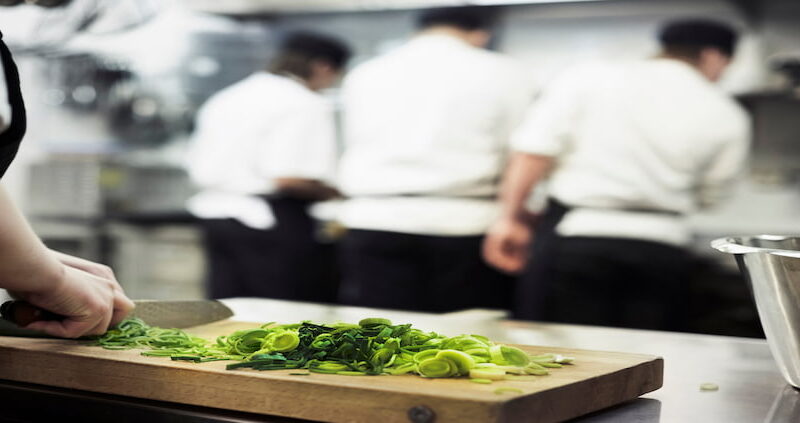From Farm to Fork: How Climate Change is Reshaping Our Menus
We’ve all experienced the rising costs of food, both at the grocery store and when we go out to eat. You might not think climate change has anything to do with it.
Think again.
The agriculture industry has been affected by rising temperatures, prolonged droughts and other extreme weather events disrupting planting and harvesting cycles for America’s farmers. In turn our food supply is being impacted, and chefs are feeling the heat both in and outside of the kitchen.
Chefs across the country are having to adapt their menu offerings due to the challenges posed by climate change such as increasing and fluctuating supply chain costs, ingredient shortages, and operational disruptions due to extreme weather events are all a direct result of climate change.
Climate change is significantly altering the availability and quality of many staple ingredients used in professional kitchens. For example, warming waters are affecting salmon populations, making it harder for chefs to consistently source this popular fish. Leading some chefs to explore alternative options or adjust their menu offerings.
Shifting growing seasons are impacting the availability of produce. Early spring thaws followed by late frosts can devastate fruit crops, while extended heat waves can reduce vegetable yields. Chefs are having to be more flexible with their menus, sometimes substituting ingredients at the last minute based on availability.
The impact of climate change on what and how we eat isn’t just limited to the availability of ingredients; it is also driving up costs across the board. The increased expense of water for irrigation during droughts, the need for more pest control as pests proliferate in warmer climates, and the costs associated with transporting food from further afield as local sources dwindle—all these factors add up. For restaurants already operating on thin margins, these rising costs can be the difference between staying afloat and shuttering their doors.
In an effort to navigate these challenges, chefs are turning to innovation. Some are embracing farm-to-table practices, such as Iowa restaurant HoQ which has partnered with more than a dozen local farms and producers to achieve a menu which is 90% local. Other chefs are taking it a step further and growing their own food.
As climate change continues to disrupt the agricultural landscape, the food industry will need to evolve to keep pace. For consumers, this might mean adjusting to seasonal menus which reflect the realities of what can be grown sustainably. For chefs, it means continuing to innovate and adapt in an ever-changing culinary landscape. But one thing is certain: the connection between the environment and our food is becoming more apparent—and more important—than ever before.
The rising costs we see in grocery stores and restaurants are just the tip of the iceberg. They serve as a tangible reminder of the far-reaching consequences of climate change on our food systems. As we gather around our dining tables, it’s crucial to recognize the intricate web of environmental, economic, and agricultural factors that influence every bite we consume.
The ability to feed ourselves—and the world— depends on how we respond to these challenges today.
Originally written for and published on RealClear Energy.

